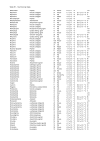Survey and critical appraisal of pharmacological agents with potential thermo-modulatory properties in the context of artificially induced hypometabolism
- PMID: 30873441
- PMCID: PMC6410648
Survey and critical appraisal of pharmacological agents with potential thermo-modulatory properties in the context of artificially induced hypometabolism
Abstract
A reduction in body temperature can be achieved by a downward adjustment of the termoneutral zone, a process also described as anapyrexia. Pharmacological induction of anapyrexia could enable numerous applications in medicine. However, little is known about the potential of pharmacological agents to induce anapyrexic signaling. Therefore, a review of literature was performed and over a thousand pharmacologically active compounds were analyzed for their ability to induce anapyrexia in animals. Based on this analysis, eight agents (helium, dimethyl sulfoxide, reserpine, (oxo)tremorine, pentobarbital, (chlor) promazine, insulin, and acetaminophen) were identified as potential anapyrexia-inducing compounds and discussed in detail. The translational pitfalls were also addressed for each candidate compound. Of the agents that were discussed, reserpine, (oxo)tremorine, and (chlor) promazine may possess true anapyrexic properties based on their ability to either affect the thermoneutral zone or its effectors and facilitate hypothermic signaling. However, these properties are currently not unequivocal and warrant further examination in the context of artificially-induced hypometabolism.
Keywords: animals; body temperature; hypothermia induction; pharmacological agents; thermoneutral zone.
Figures









Similar articles
-
The physiology of artificial hibernation.J Clin Transl Res. 2015 Sep 30;1(2):78-93. eCollection 2015 Sep 30. J Clin Transl Res. 2015. PMID: 30873448 Free PMC article.
-
The thermoregulation system and how it works.Handb Clin Neurol. 2018;156:3-43. doi: 10.1016/B978-0-444-63912-7.00001-1. Handb Clin Neurol. 2018. PMID: 30454596 Review.
-
Absence of hydrogen sulfide-induced hypometabolism in pigs: a mechanistic explanation in relation to small nonhibernating mammals.Eur Surg Res. 2015;54(3-4):178-91. doi: 10.1159/000369795. Epub 2015 Feb 12. Eur Surg Res. 2015. PMID: 25676197
-
Nitric oxide in the rostral ventrolateral medulla modulates hyperpnea but not anapyrexia induced by hypoxia.Brain Res. 2003 Jul 11;977(2):231-8. doi: 10.1016/s0006-8993(03)02685-4. Brain Res. 2003. PMID: 12834883
-
Fever and anapyrexia in systemic inflammation: intracellular signaling by cyclic nucleotides.Front Biosci. 2003 Sep 1;8:s1398-408. doi: 10.2741/1188. Front Biosci. 2003. PMID: 12957844 Review.
Cited by
-
Carotid chemoreceptor denervation does not impair hypoxia-induced thermal downregulation but vitiates recovery from a hypothermic and hypometabolic state in mice.Sci Rep. 2019 Mar 26;9(1):5132. doi: 10.1038/s41598-019-41546-x. Sci Rep. 2019. PMID: 30914789 Free PMC article.
References
-
- Steiner AA, Branco LG. Hypoxia-induced anapyrexia: implications and putative mediators. Annu Rev Physiol. 2002;64:263–288. - PubMed
-
- Cerri M, Zamboni G, Tupone D, Dentico D, Luppi M, Martelli D, Perez E, Amici R. Cutaneous vasodilation elicited by disinhibition of the caudal portion of the rostral ventromedial medulla of the free-behaving rat. Neuroscience. 2010;165:984–995. - PubMed
-
- Crawshaw L, Grahn D, Wollmuth L, Simpson L. Central nervous regulation of body temperature in vertebrates: comparative aspects. Pharmacol Ther. 1985;30:19–30. - PubMed
Publication types
LinkOut - more resources
Full Text Sources
